 Harry Houdini was born in Budapest, Hungary, to a Jewish family. Houdini began his career as a trapeze artist and was later renowned as a magician and an escape artist. He astonished audiences by escaping from handcuffs, straitjackets, and prison cells.
Harry Houdini was born in Budapest, Hungary, to a Jewish family. Houdini began his career as a trapeze artist and was later renowned as a magician and an escape artist. He astonished audiences by escaping from handcuffs, straitjackets, and prison cells.
Houdini also held a patent for a style of diving suit. The innovation was granted U.S. Patent Number 1,370,316 on March 1, 1921. The object of Houdini’s diving suit was to allow a diver to get out of the suit while submerged. This helped the diver swiftly and safely escape and reach the surface of the water. It also allowed a diver to don his suit without assistance. This was accomplished by being formed in two halves, with a locking joint in the middle. The diver could reach this joint and release it, and then escape from the suit. Continue reading “Making History: Harry Houdini Patents a Diving Suit”

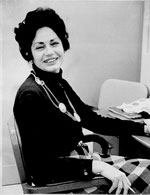 Liquid Paper was invented by a bank secretary form Texas in 1951. Bette Nesmith Graham, mother of of Monkees member Michael Nesmith, concocted the first correction fluid in her kitchen with tempera paint and a blender. Her second job as painter of holiday windows at the bank was the inspiration behind her invention. Graham noticed “with lettering, an artist never corrects by erasing, but always paints over the error. So I decided to use what artists use. I put some tempera water-based paint in a bottle and took my watercolor brush to the office. I used that to correct my mistakes.”
Liquid Paper was invented by a bank secretary form Texas in 1951. Bette Nesmith Graham, mother of of Monkees member Michael Nesmith, concocted the first correction fluid in her kitchen with tempera paint and a blender. Her second job as painter of holiday windows at the bank was the inspiration behind her invention. Graham noticed “with lettering, an artist never corrects by erasing, but always paints over the error. So I decided to use what artists use. I put some tempera water-based paint in a bottle and took my watercolor brush to the office. I used that to correct my mistakes.” 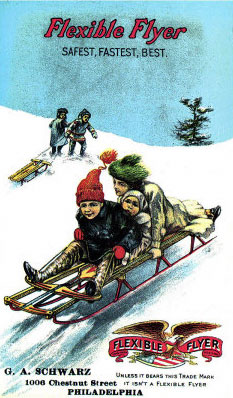 The Flexible Flyer was invented over 100 years ago by a farm equipment manufacturer. Looking to provide year round employment for his workers, Samuel Leeds Allen began trying to invent a sled in the 1880’s. Coasting, as sledding was then known, was very popular and Allen was hoping to capitalize on this.
The Flexible Flyer was invented over 100 years ago by a farm equipment manufacturer. Looking to provide year round employment for his workers, Samuel Leeds Allen began trying to invent a sled in the 1880’s. Coasting, as sledding was then known, was very popular and Allen was hoping to capitalize on this.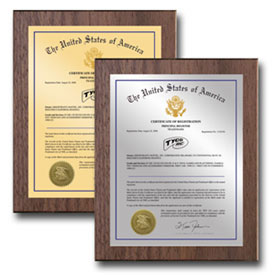
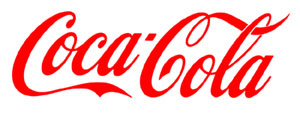 Would you believe the world’s best known brand got its name from a bookkeeper?
Would you believe the world’s best known brand got its name from a bookkeeper?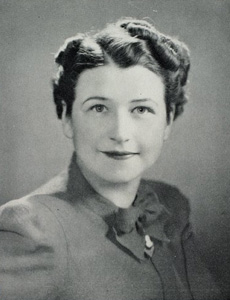 Chocolate chip cookies seem like a classic part of American baking like the apple pie, but actually these delicious cookies were not invented until 1933. Ruth Graves Wakefield was the woman who brought us these delectable treats. Built on the outskirts of Whitman, MA in 1709 as a collection booth for the toll road, Mr. & Mrs. Wakefield acquired the building in 1930 and transformed it into a restaurant and inn. The newly renamed Toll House Inn was a charming respite for weary travelers, boasting comfortable lodgings along with homemade meals and fresh baked goods.
Chocolate chip cookies seem like a classic part of American baking like the apple pie, but actually these delicious cookies were not invented until 1933. Ruth Graves Wakefield was the woman who brought us these delectable treats. Built on the outskirts of Whitman, MA in 1709 as a collection booth for the toll road, Mr. & Mrs. Wakefield acquired the building in 1930 and transformed it into a restaurant and inn. The newly renamed Toll House Inn was a charming respite for weary travelers, boasting comfortable lodgings along with homemade meals and fresh baked goods.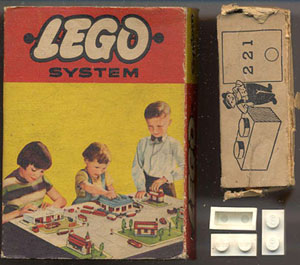 On January 28, 1958 at 1:58 pm Godtfred Kirk Christiansen submitted the patent application for the improved Lego brick and building system in Copenhagen, Denmark. Today, the thousands of different shapes, sizes and colors of Legos are all designed to connect with the original brick from the Danish patent. All 2×4 Legos made since 1958 have been manufactured to the exact same measurements as the version outlined in the original patent.
On January 28, 1958 at 1:58 pm Godtfred Kirk Christiansen submitted the patent application for the improved Lego brick and building system in Copenhagen, Denmark. Today, the thousands of different shapes, sizes and colors of Legos are all designed to connect with the original brick from the Danish patent. All 2×4 Legos made since 1958 have been manufactured to the exact same measurements as the version outlined in the original patent. In 1915, a U.S. Patent No. 1,125,476 was issued to George Claude of Paris for a “System of Illuminating by Luminescent Tubes.” This patent was the basis for the neon sign. Claude, an engineer, chemist and inventor was the first person to create a lamp by applying an electrical discharge to a sealed tube of neon. By mixing other gases with the neon, Claude was able to produce the light in many different colors. He, also, discovered that the tubes holding the gas mixture could be bent and twisted. This allowed him to produce the letters and shapes that are the signature of a neon sign.
In 1915, a U.S. Patent No. 1,125,476 was issued to George Claude of Paris for a “System of Illuminating by Luminescent Tubes.” This patent was the basis for the neon sign. Claude, an engineer, chemist and inventor was the first person to create a lamp by applying an electrical discharge to a sealed tube of neon. By mixing other gases with the neon, Claude was able to produce the light in many different colors. He, also, discovered that the tubes holding the gas mixture could be bent and twisted. This allowed him to produce the letters and shapes that are the signature of a neon sign.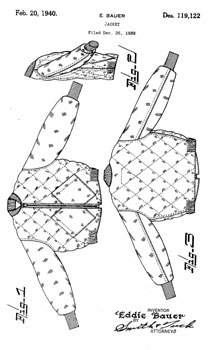 On February 20, 1940, Eddie Bauer received Design Patent Number 119,122 for a jacket. Bauer caught hypothermia while fishing in the cold, rainy Washington winter in 1936. After his near death experience, he began attempting to develop alternative outdoor wear.
On February 20, 1940, Eddie Bauer received Design Patent Number 119,122 for a jacket. Bauer caught hypothermia while fishing in the cold, rainy Washington winter in 1936. After his near death experience, he began attempting to develop alternative outdoor wear.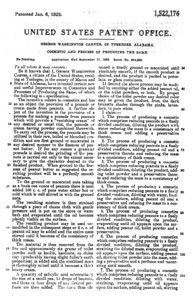 On January 6, 1925, George Washington Carver was granted patent #1,522,176 for a cosmetic and processing of producing the same. This cosmetic was a cream made from peanuts. In the patent, Carver describes this as a “vanishing cream of any desired or usual tint.”
On January 6, 1925, George Washington Carver was granted patent #1,522,176 for a cosmetic and processing of producing the same. This cosmetic was a cream made from peanuts. In the patent, Carver describes this as a “vanishing cream of any desired or usual tint.”